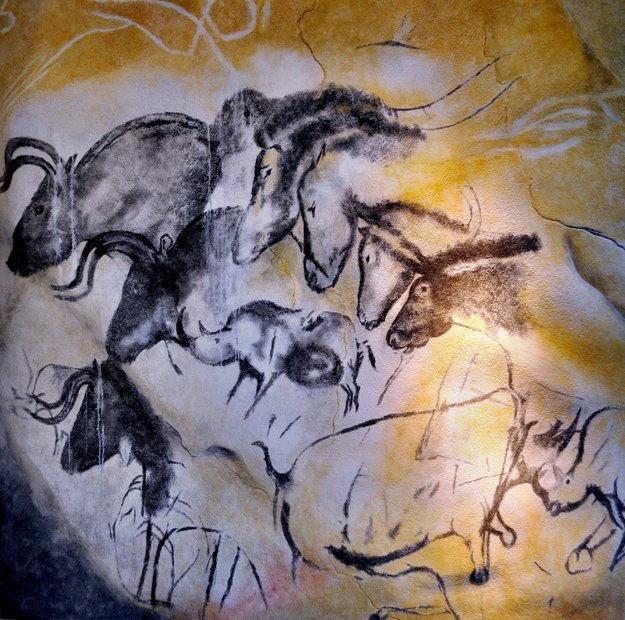Burnt bone charcoal, used in prehistoric cave paintings, will be applied to the ESA’s Solar Orbiter titanium heatshield to protect it from the Sun’s close-up glare.
Solar Orbiter, due for launch in 2017, will carry instruments to perform high-resolution imaging of Sol from as close as 42,000,000 km – a little more than a quarter of the distance to Earth. Operating in direct view of the Sun, the mission must endure 13 times the intensity of terrestrial sunlight and temperatures rising as high as 520° C.
Protecting it is a multi-layered 3.1 m by 2.4 m heatshield, explained Pierre Olivier, Solar Orbiter’s safety engineer. “And Solar Orbiter’s instruments will operate at the far end of ‘feed-through’ lines that run through the shield, some under protective covers of beryllium or glass.”

If it was good enough for 30,000-year-old Chauvet Cave paintings in southern France, it's good enough for you, aerospace. Credit: Wikimedia
Back in 2010, during the Phase-A planning stage, ESA’s materials specialists began checking manufacturing methods and materials and they soon identified a problem with the heatshield requirements, said Andrew Norman, a materials technology specialist. “To go on absorbing sunlight, then convert it into infrared to radiate back out to space, its surface material needs to maintain constant ‘thermo-optical properties’ – keep the same color despite years of exposure to extreme ultraviolet radiation.
“At the same time, the shield cannot shed material or outgas vapor, because of the risk of contaminating Solar Orbiter’s highly sensitive instruments. And it has to avoid any build-up of static charge in the solar wind because that might threaten a disruptive or even destructive discharge.”
The initial choice, carbon-fiber fabric, was ruled out and they looked instead at technology now used to coat titanium medical implants - using what cave dwellers had millenia ago. Irish company Enbio and its CoBlast technique works for reactive metals like titanium, aluminium and stainless steel, which possess a surface oxide layer, says John O’Donoghue, Managing Director of Enbio. “We spray the metal surface with abrasive material to grit-blast this layer off, but – as the CoBlast name suggests – we also include a second ‘dopant’ material possessing whatever characteristics are needed. This simultaneously takes the place of the oxide layer being stripped out.
“The big advantage is that the new layer ends up bonded, rather than only painted or stuck on. It effectively becomes part of the metal – when you handle metal you never worry about its surface coming off in your hands.”
The material Enbio will apply to the outermost titanium sheet of Solar Orbiter’s multi-layered heatshield is called ‘Solar Black’ – a type of black calcium phosphate processed from burnt bone charcoal.
Sometimes what's old is new again.





Comments